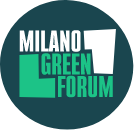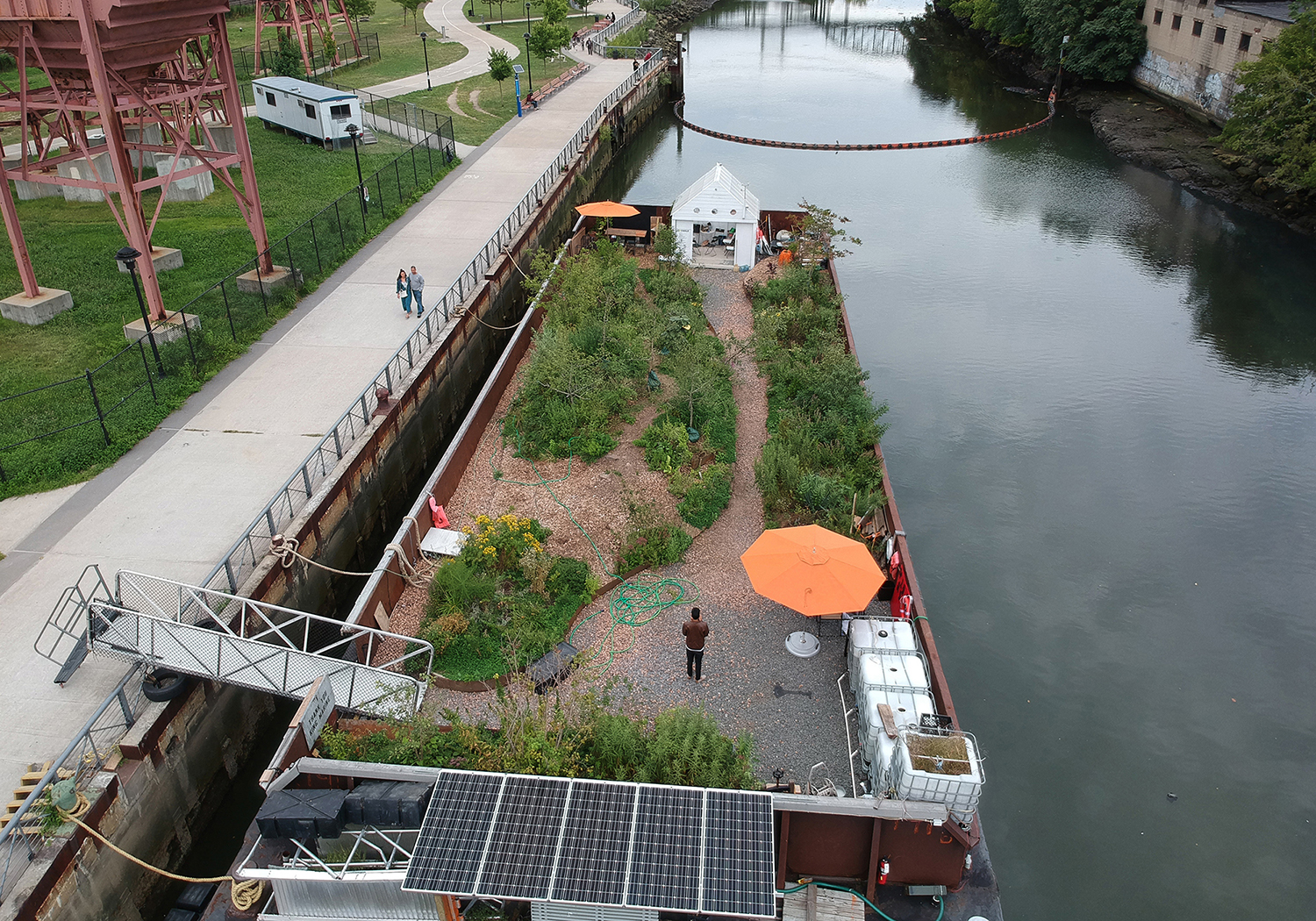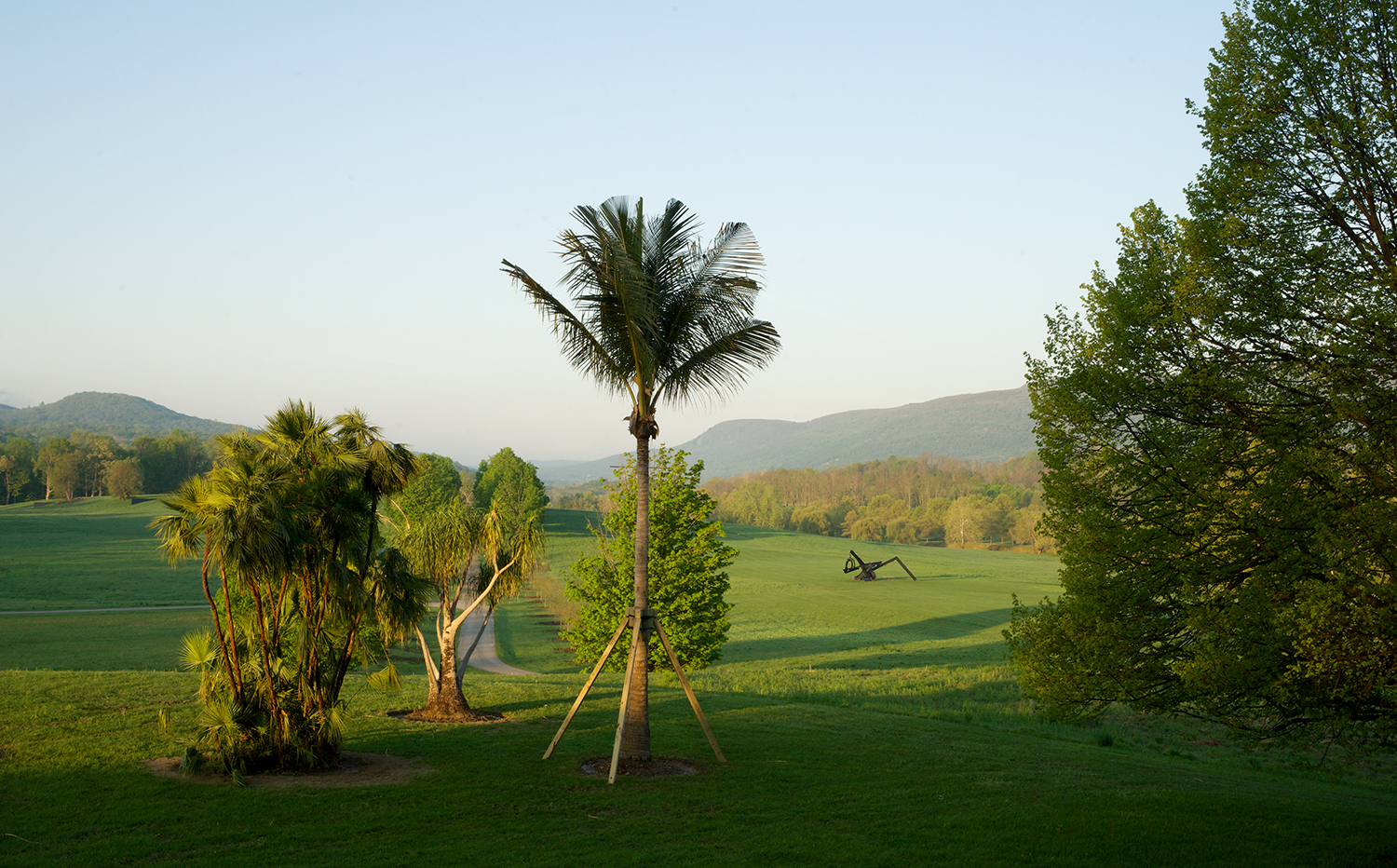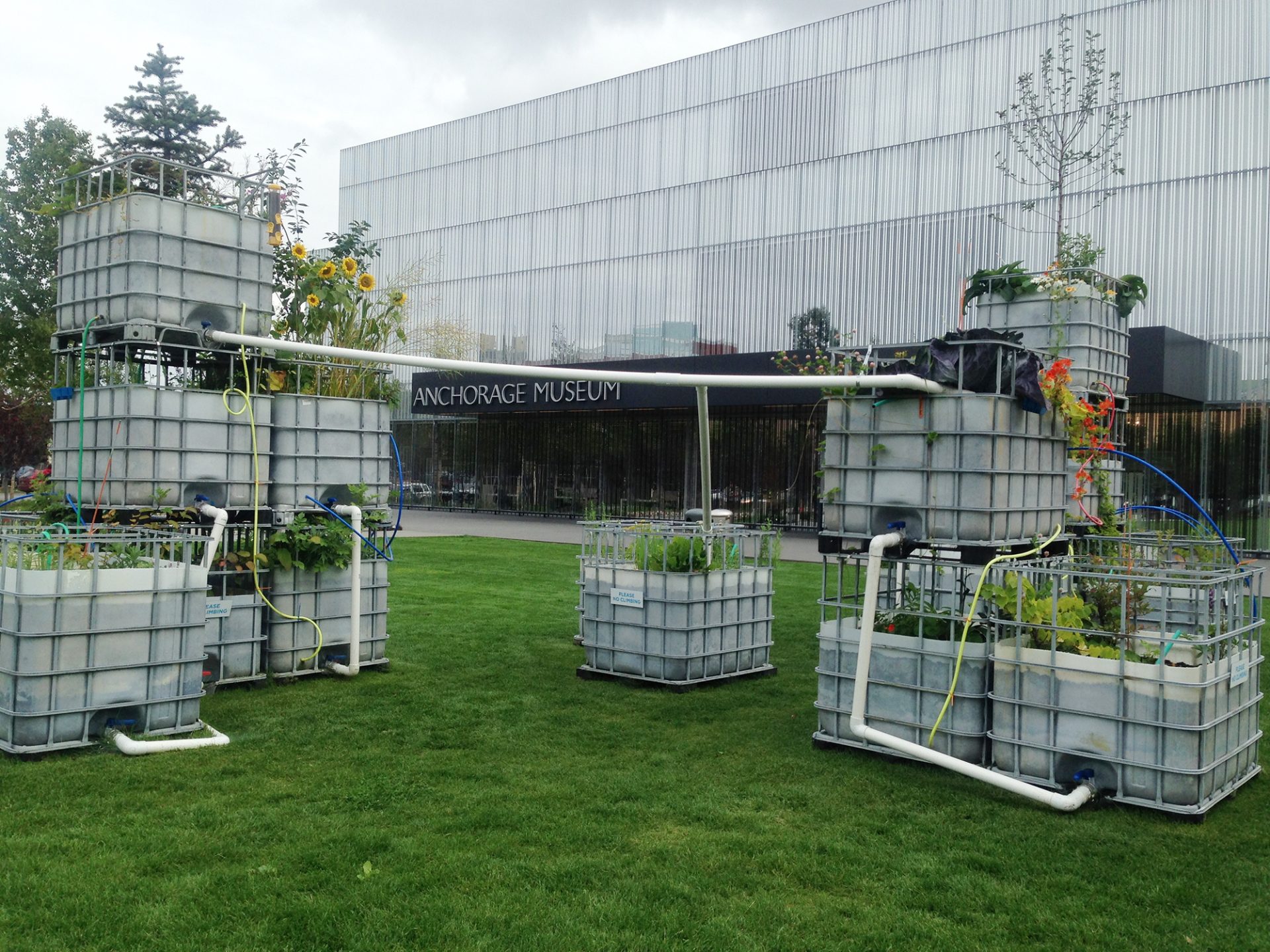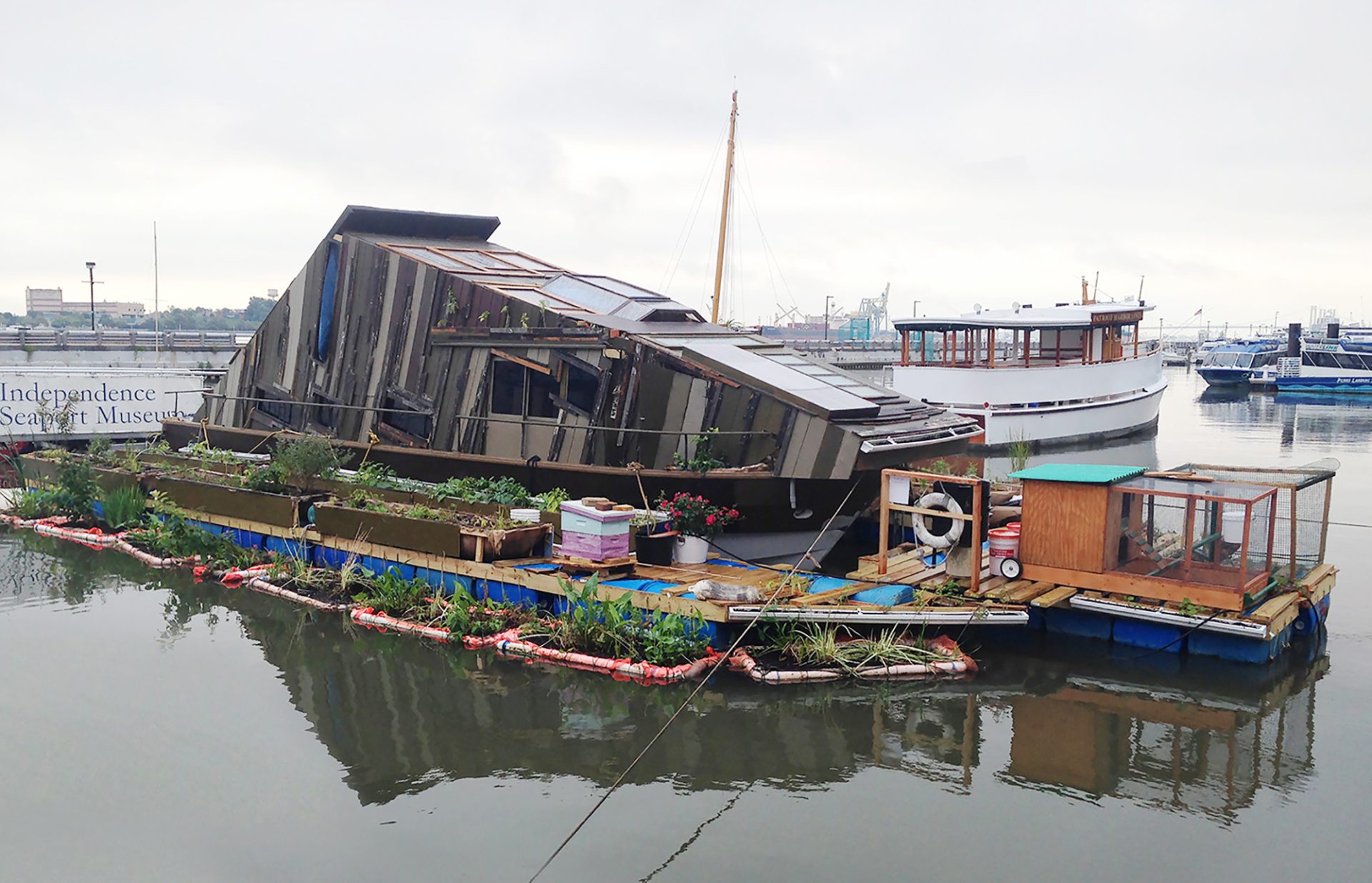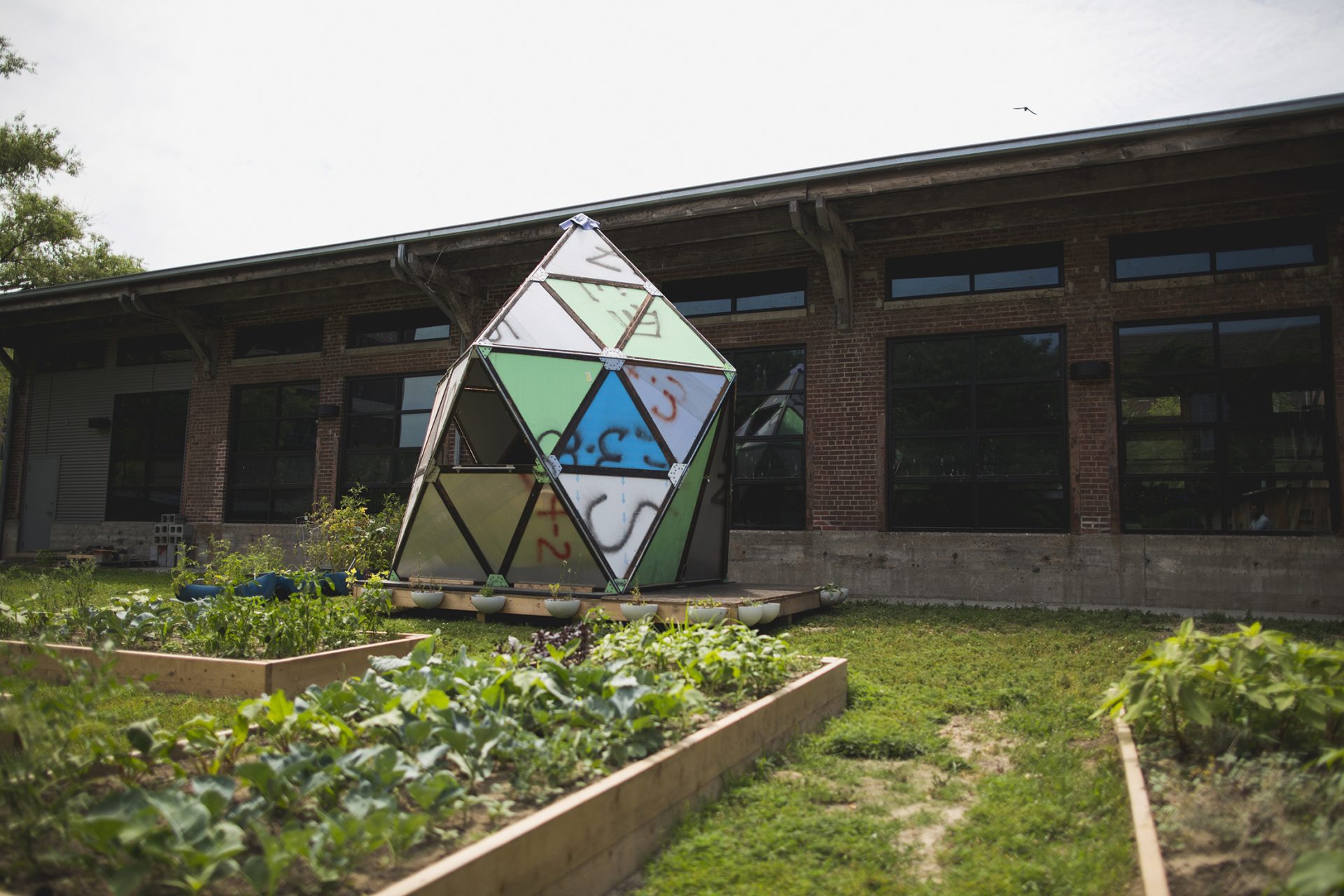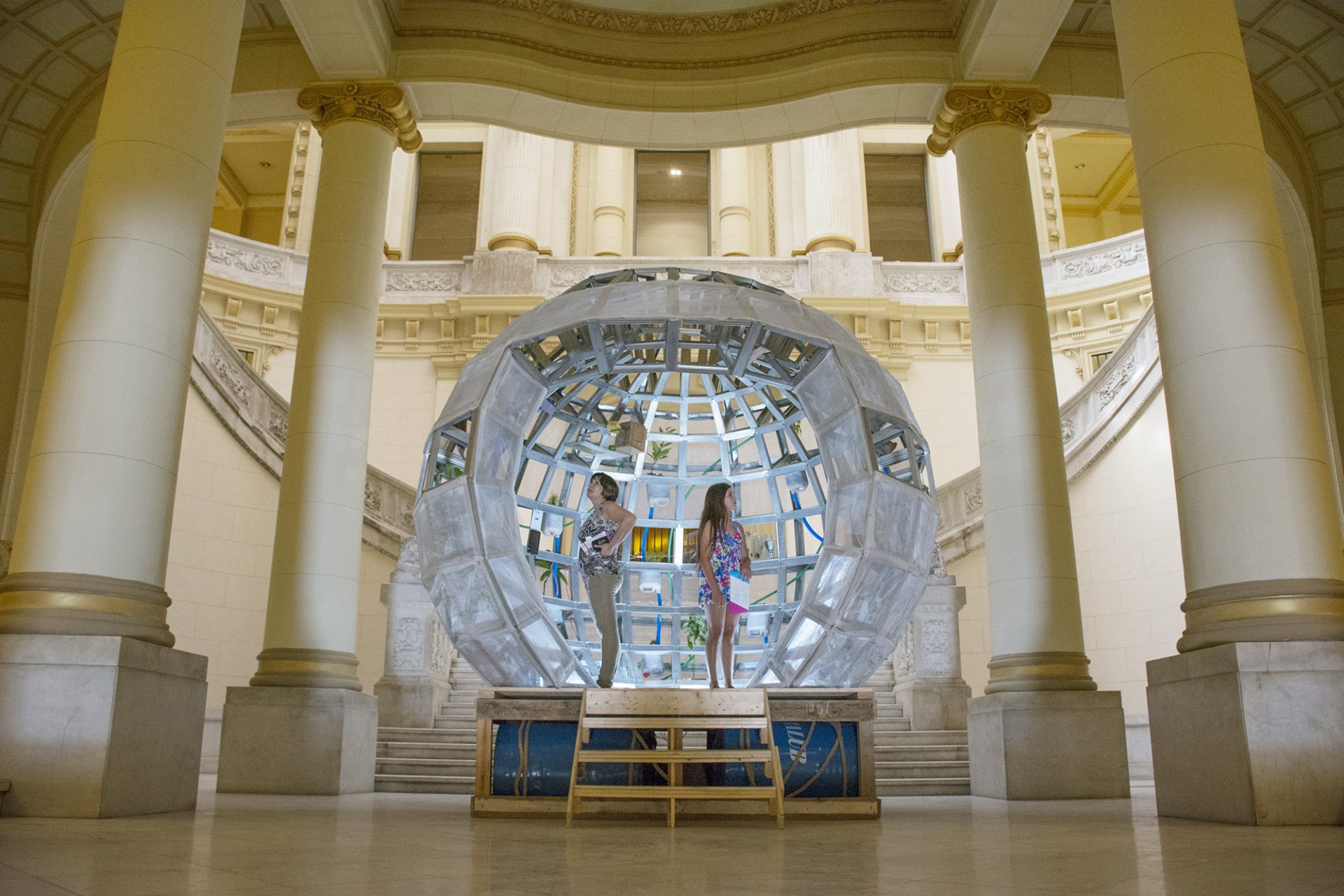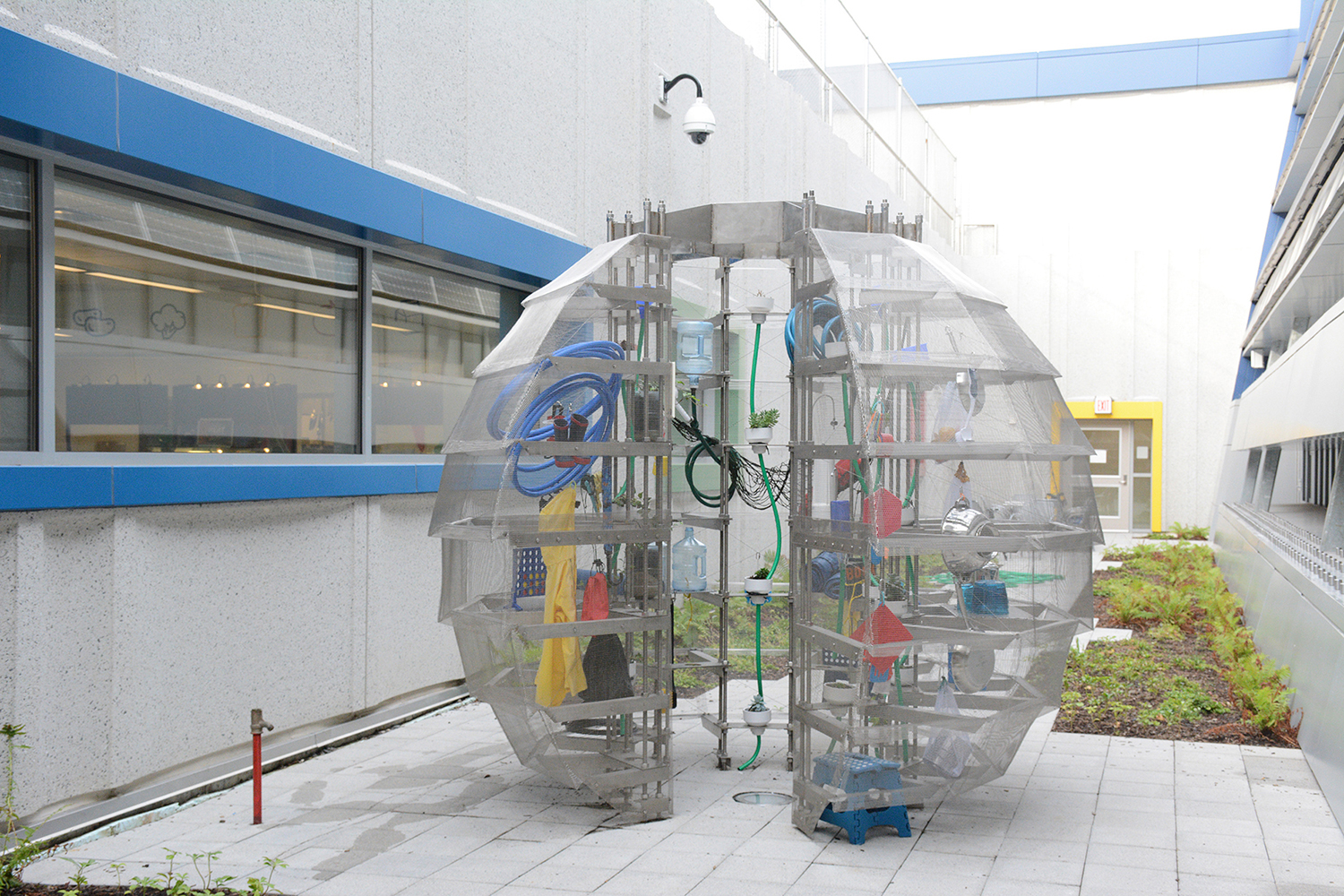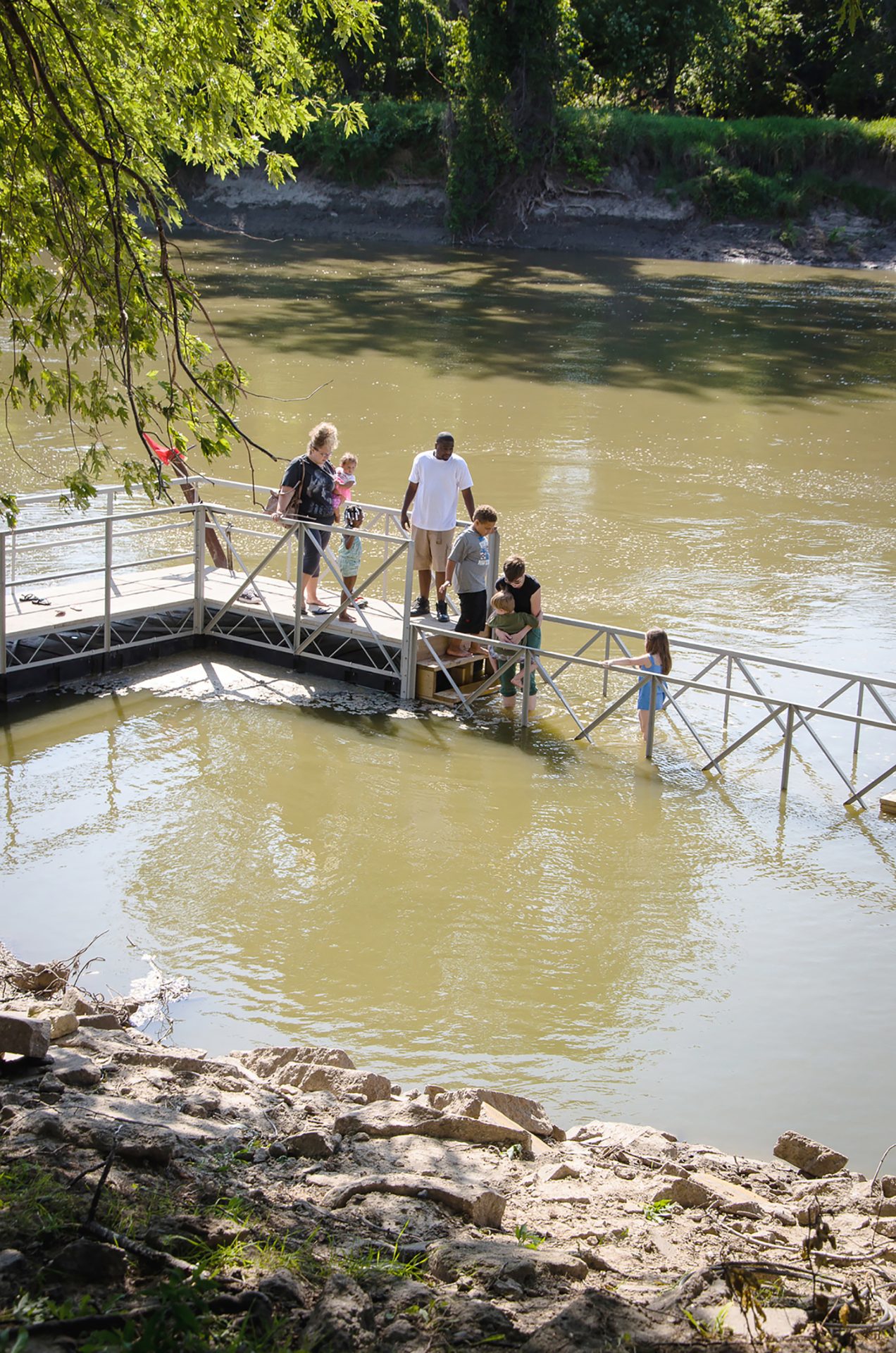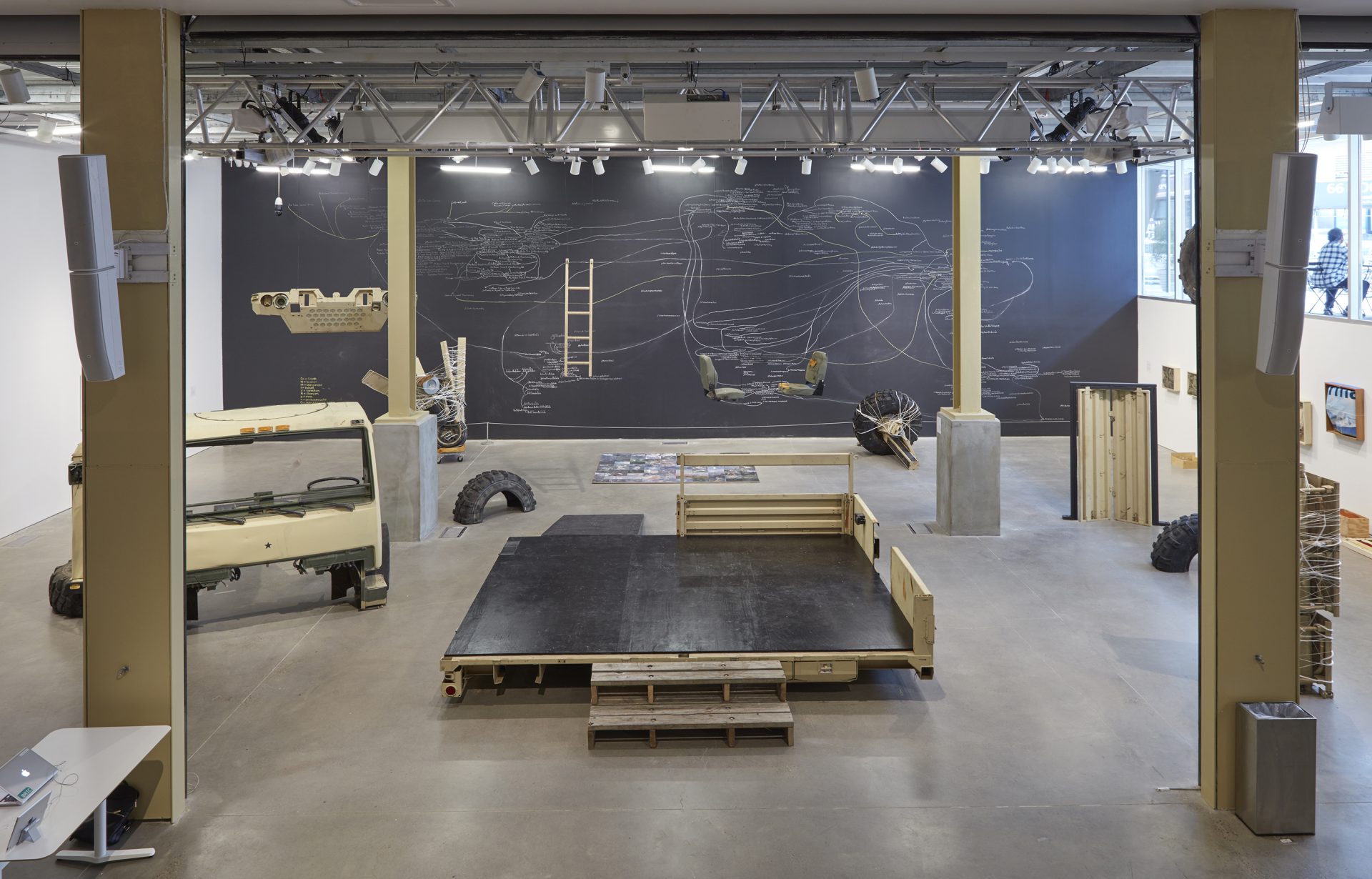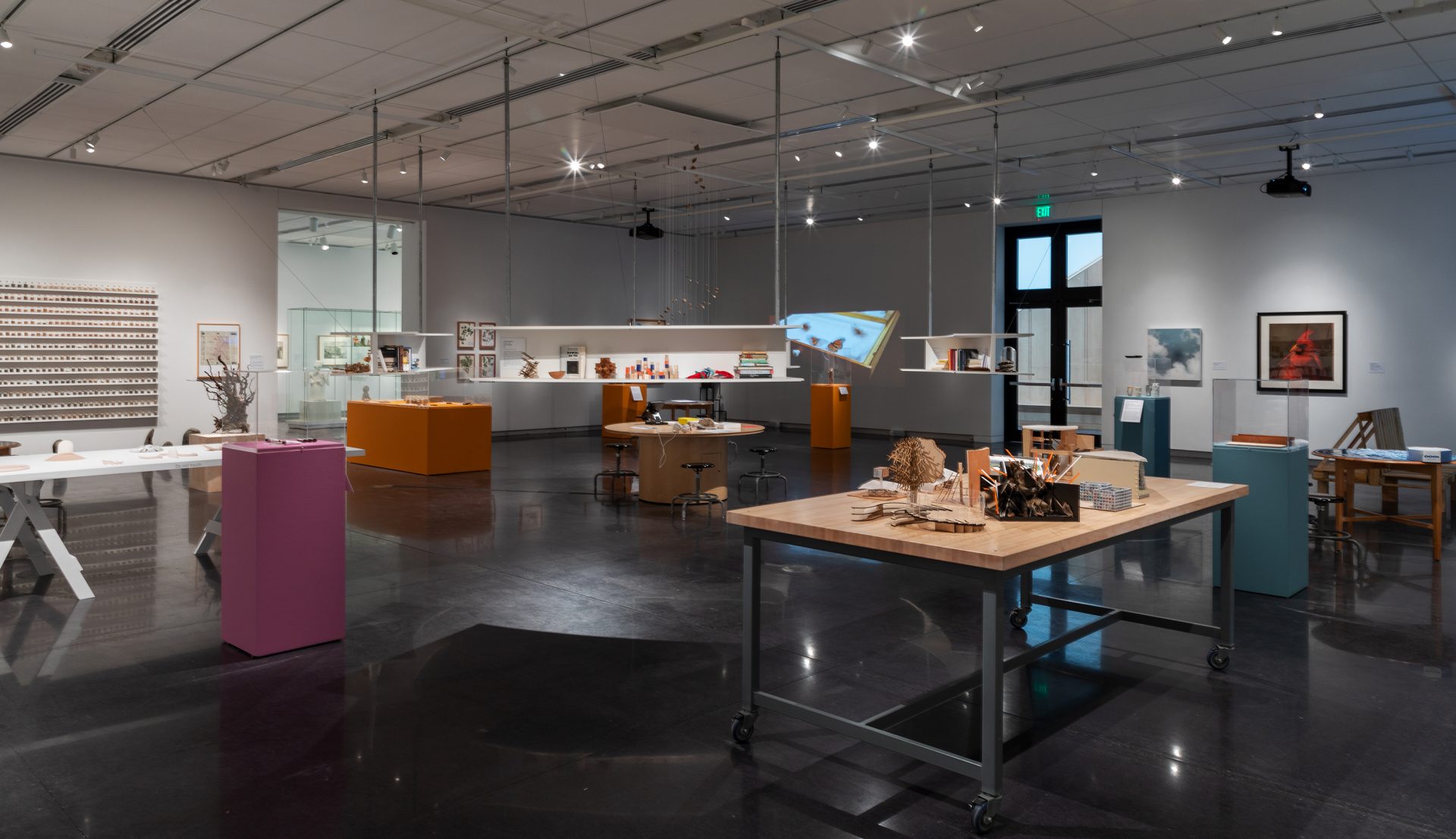Mary Mattingly: interdisciplinary art on sustainability
Mary Mattingly is an interdisciplinary artist based in New York. Mary co-creates sculptural ecosystems that address forms of public food and commons in New York City. In 2020 she was the Brooklyn Public Library’s Artist in Residence and launched Public Water with +More Art, a project that comprised a history of New York City’s Drinking Watershed and a sculpture that mimicked the watershed while cleaning water. In 2016 she co-launched Swale, a mobile free public food forest on a barge in New York City. Docked at public piers but following waterways common laws, Swale circumnavigated New York’s public land laws, allowing anyone to pick free fresh food. The project helped instigate the “foodway” in Concrete Plant Park, the Bronx in 2017. Considered a pilot project, the “foodway” is the first time New York City Parks is inviting people to publicly forage in over 100 years. For the past eight months, Mattingly has been working in Glacier National Park in Montana on a water clock called Limnal Lacrimosa.
Swale
2016, and ongoing
A steel hopper barge, edible vegetation, soil, gravel, aluminum, wood, fabric, landfill liner
130 x 40 x 22
New York City currently has 100 acres of community garden space, compared with 30,000
acres of public parkland. “Swale” is a public floating food forest in New York City, it utilizes
common laws of the water in order to circumvent New York City’s public land laws. Growing or
picking food on New York City’s public land has been off-limits for almost a century for fear that
a glut of foragers may destroy an ecosystem. This way, Swale is able to dock adjacent to public
land and allow people to freely forage edible and medicinal plants grown onboard
Along the Lines of Displacement
2018
Trees, soil
33’ x 40’ x 42’
Three tropical fruit trees from agricultural zones 9 and 10 transplanted in agricultural zone 5 and
6 as a “living sculpture” and provocation: a proposal for a future that is predicted for the turn of
the next century, when a 4-degree Celsius [7.2-degree Fahrenheit] temperature rise is the
baseline for change with climate change.
Arctic Food Forest
2016 and ongoing
16’ x 30’ x 40’ footprint
The risks around food security are greatly increased in an area of the United States where food
is roughly 4x as expensive as it is in the lower 48 states. Arctic Food Forest utilizes
permaculture to plant a regenerative ecosystem with Zone 5 and 6 edible perennial plants and
predictive modeling to plan for a warming arctic.
Wetland
2014 – 2017
Rockwell Whitcraft boat hull, with reclaimed lumber, windows, plastic drums, vegetation, and a chicken coop
50′ x 24′ x 18′
Wetland resembles a sunken house. It was built atop an old boat hull and functioned as an art
residency on the Delaware River. It was sustained through a cooperative agreement between
Bartram’s Garden and the University of Pennsylvania where it was used as a classroom and
space for citizen science on the river in Philadelphia. Wetland contained beehives, edible
perennial gardens, solar energy, and water purification systems. Wetland is surrounded by
edible gardens and remediating wetlands
Flock House Project
2015
Alumalite sheets, recycled maple hardwood flooring from a high school gymnasium, hinges, cedar wood, plants, soil, and scavenged tools
“Flock House Project ” was a creative space built from refuse to meet Omaha’s temporary
buildings code. It functioned as an art residency, public stage, and a shared community garden.
Pull
2015
Aluminum drywall stud, US Military parachutes, perennial edible plants, plastic juice jugs, 55 gallon oil barrels, fish, birds, lighting, 55 gallon drums, wood, rope
10’ x 10’ x 13’
Pull was an autonomous ecosystem that was pulled to different sites throughout Havana, Cuba.
It housed birds and fish that ate off of a regenerating supply of plant life and algae. Pull was a
proposal for a temporary autonomous zone, and housed ecosystems as well as activities
Flock House
Located at PS62 in Staten Island
8’ x 8’ x 12’
Flock House was installed in Public School 62 on Staten Island. It is a place for school children
to visit to learn about ascetic living in a fantastical space. This is a permanent translation of a
public art project that took place in Dumbo in 2012 and Omaha in 2014.
Wading Bridge
2015
Galvanized steel and flotation
32’ x 16’ x 4’
Wading Bridge is an experiential sculpture that invited people into the fast-moving nitrate-filled
river in Des Moines IA, a river that is continually flooding and polluted from nitrate runoff from
farms nearby.
What Happens After?
2018
Bric, New York
Reconstructed military vehicle
What happens when an object that embodies both the systemic violence represented by war
and and by climate change is manifested in a public space? The vehicle – used in the Gulf and
Afghan wars and made in the U.S. by Oshkosh Defense – was collaboratively re-designed by
nine artists, veterans, and activists into a platform for performance. Throughout the run of the
exhibition, programming by these artists and across BRIC will be presented on the platform. The
activation of an object with such a loaded history will further challenge our ability to collectively
reenvision our environment in the present and future. When we’re able to change the form and
function of an object with a violent and complex history, it can be powerful. Can it become ritual?
Can it be healing?
Last Library
”Last Library” was a project showcased at the University of Colorado’s Art Museum where
students and facilitators co-designed possibilities for an “Ecotopian Library” in Boulder,
Colorado. The “Ecotopian Library” is a long term accumulative toolkit that stems from the belief
that art and ecotopian thought can be part of cultivating systemic social change.
